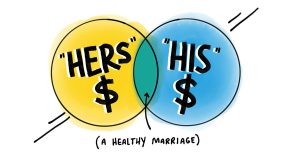Spencer Platt/Getty Images
Nvidia and other Magnificent 7 stocks have been on a tear recently, making hundreds of billions of dollars for investors. But traders can make even higher returns by riding the coattails of these popular tech stocks using what are known as single-stock exchange-traded funds (ETFs). The funds often aim for two times the return of their target stock, tempting traders with the possibility of outsized gains.
Here’s how single-stock ETFs work, how much you could make and the potential risks.
Single-stock ETFs: What are they and how much could you earn?
Single-stock ETFs invest literally in just one stock, unlike typical funds that own dozens or even hundreds of stocks. The funds often allow investors to juice the returns of the target stock, earning substantially more than they would by holding the stock directly.
Single-stock funds often have three major types:
- Leveraged funds: These funds borrow money and then invest in the target stock, giving investors up to two times the daily return on the stock. So if the target stock rises 10 percent one day, a 2x ETF would be expected to rise about 20 percent that day.
- Inverse funds: Inverse funds let investors short-sell the stock and profit on its decline. When the target stock falls, the ETF actually rises. Some funds may use leverage to boost that return and can earn as much as two times the inverse of the stock daily.
- Dividend funds: These funds use options to create dividend income from stocks that may not even pay a dividend. They use what is known as covered calls – selling call options on a stock – to generate income and then pay the money out to investors.
Of the three, leveraged funds are the ones most likely to capture the highest investor interest, because they turbocharge the returns of already-surging stocks. Investors may think, “Why settle for 200 percent gains on Nvidia when I could get 300 percent or more on the single-stock ETF?”
The appeal of leveraged single-stock ETFs for investors is the chance to generate even more spectacular returns from high-flying stocks. For example, Nvidia climbed an outstanding 159 percent year to date as of July 15. But the Direxion Daily NVDA Bull 2X Shares fund (NVDU) soared 329 percent in that same period. That’s the potential of a double-leveraged fund.
Single-stock funds charge hefty fees for the privilege of investing, though. The expense ratio is typically more than 1 percent, meaning it would cost about $100 a year for every $10,000 invested. In contrast, the best index funds typically charge less than 0.1 percent, or $10 annually.
How single-stock ETFs work
Around 60 single-stock ETFs populate the market, as of May 2024. But the number has been growing quickly, as money has been flooding into the space, not surprising given the strong bull market and the potential for amazing gains here. And more funds are on the way, as fund companies look to take advantage of investors’ growing interest in the niche.
Among the most popular single-stock ETFs are those based on Tesla and Nvidia. But other big tech names such as Apple, Microsoft, Amazon, Alphabet and Meta Platforms have them, too. These funds are based on popular, high-volatility stocks that attract enormous interest from investors, so don’t expect to see your favorite small-cap or even mid-cap stock with a fund.
That said, some fund companies are looking to roll out single-stock ETFs on meme stocks such as troubled theater chain AMC Entertainment and video game retailer GameStop. GameStop has been the subject of intense speculation with the return of a notable investor there.
Leveraged funds offer the potential for the highest return. These funds borrow money and then buy the target stock, offering up to two times the exposure to the stock. However, they’re meant to track the daily returns of the stock, not as buy-and-hold investments. They’re rebalanced daily so that they have the appropriate amount of leverage for their strategy. This process can create significant tracking error, in which the fund does not fully achieve its target returns.
Dividend funds use call options to produce income from stocks that may not offer a dividend and then the fund pays out the income. The fund purchases the underlying stock and then sells short-term calls on the stock, generating cash. This short call limits the upside on the stock, so if the stock soars, the fund will capture only a portion of the upside.
This strategy typically works better when markets are stable or rising a little, generating income and a small capital gain. But if the stock soars, this kind of strategy will likely underperform and can return much less than simply holding the underlying stock itself.
So it’s key to know what kind of single-stock fund you’re buying and what kind of returns you can expect from it. You can purchase single-stock ETFs at any of the best brokers for stock trading, and all major online brokers offer no-commission trades on ETFs.
Risks of single-stock ETFs
Single-stock funds present some of the same risks as the individual stocks themselves but present other risks due to the structure and setup of the fund:
- Full reliance on a single stock: Like investing only in an individual stock, buying a single-stock ETF means the investment relies fully on that one company. If it does poorly, the fund will do poorly, too, without other investments in the fund to reduce its effect.
- Greater volatility: Leveraged funds magnify volatility, so these funds are even more volatile than the already volatile stocks on which they’re based. You’ll need strong nerves to buy these funds and hold through some ups and downs.
- High expense ratios: Single-stock funds are among the more expensive ETFs on the market, typically charging expense ratios of around 1 percent and up or about $100 per year for every $10,000 invested. In contrast, funds based on the S&P 500 index may charge around 0.03 percent, or about $3 per year for every $10,000 invested.
- Capped upside on income funds: Single-stock dividend funds sell call options, meaning they can limit your upside, especially on surging stocks, even if they limit the downside. These funds can drastically underperform when stocks are surging.
- Leveraged losses: The nature of a leveraged fund means that losses hurt even more and make it even harder to recover. For example, if a stock fell 20 percent, it would need to rise 25 percent for you to break even. For a 2x leverage fund, the same decline would equal a 40 percent decline on the fund. However, it would require a 66.7 percent gain to get back to even on the fund – much more than twice the loss on the stock.
- Not meant for the long term: Leveraged funds are really built for the short term, designed for investors looking to get enhanced exposure to daily moves in the target stocks.
Bottom line
While single-stock ETFs can deliver blockbuster returns – even over longer time frames – they really do best when the target stock is surging. In this case, the fund’s leverage seems to work miracles, but when the stock turns lower, the fund can make every stock decline excruciating.
Editorial Disclaimer: All investors are advised to conduct their own independent research into investment strategies before making an investment decision. In addition, investors are advised that past investment product performance is no guarantee of future price appreciation.
Read the full article here










